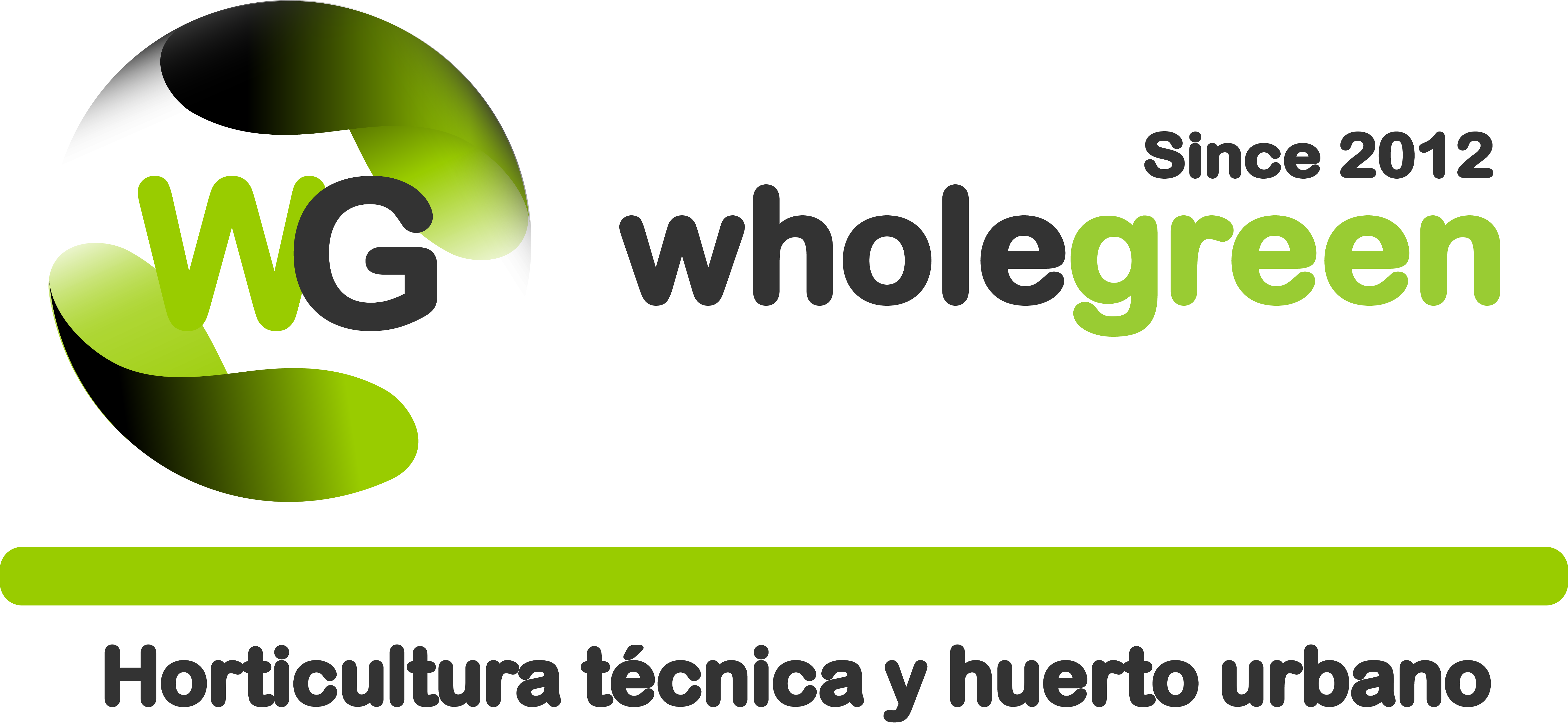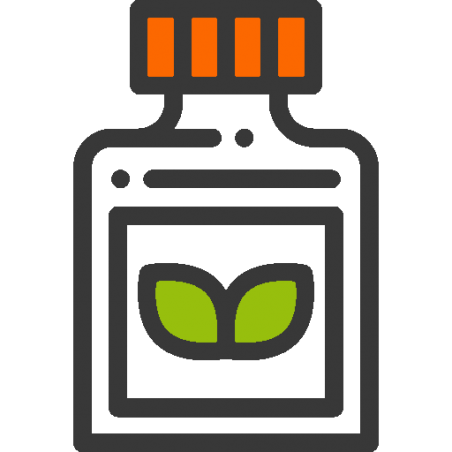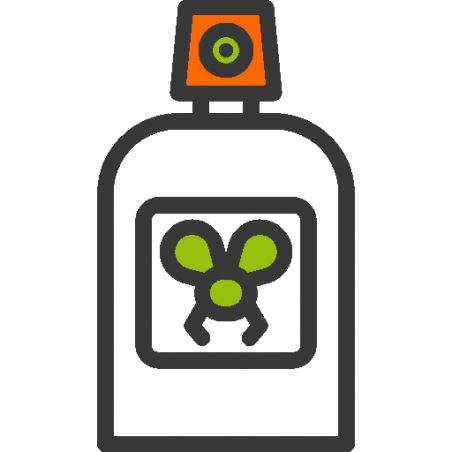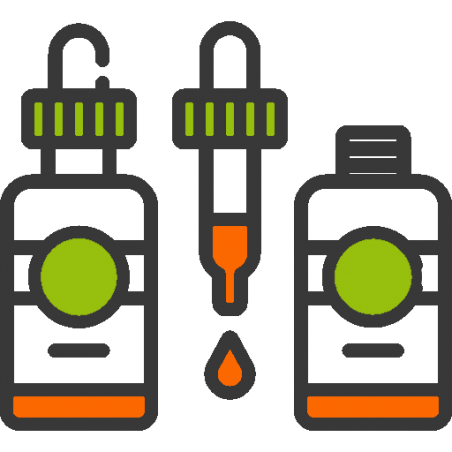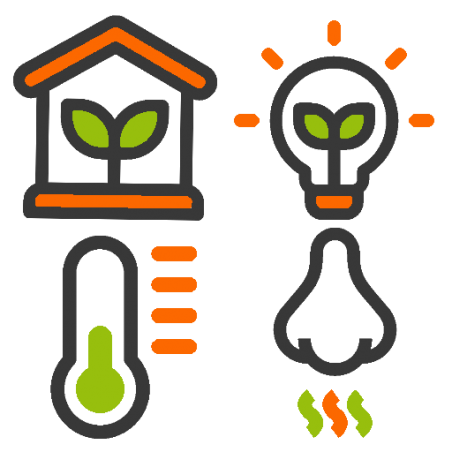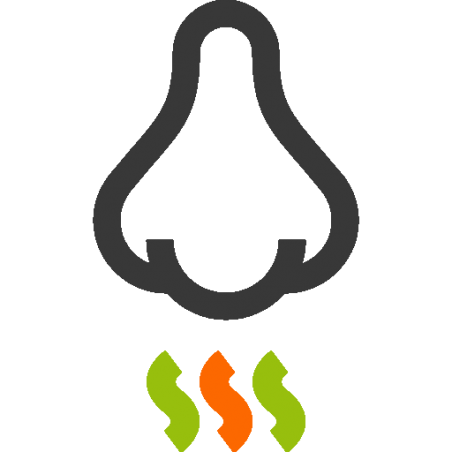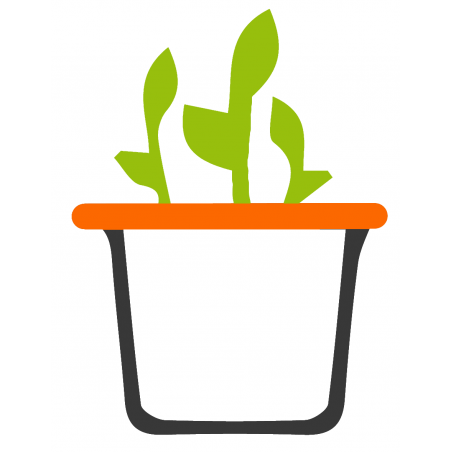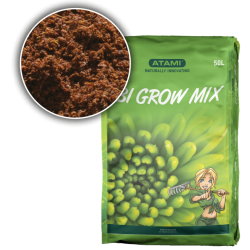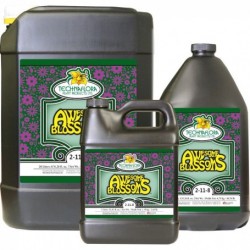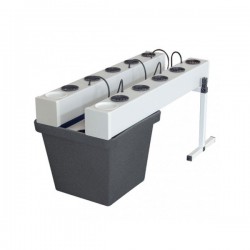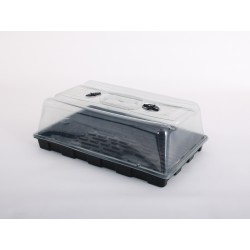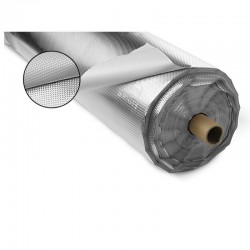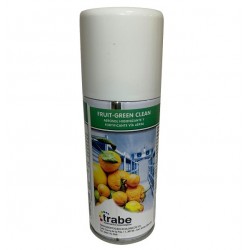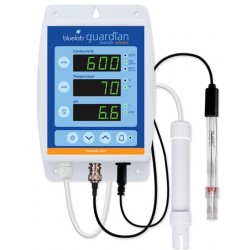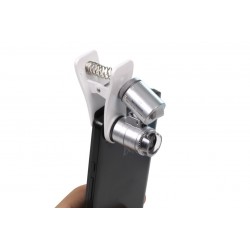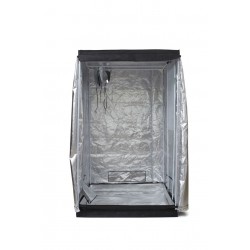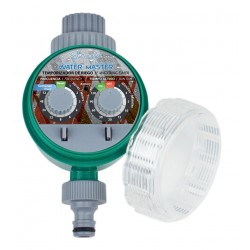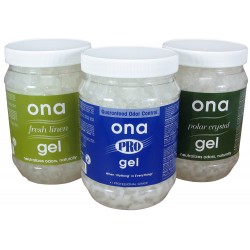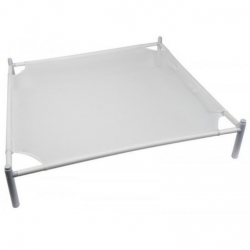Subcategories
-
Fertilizers and additives
Among the fertilizers specially formulated for this type of crops, there is a wide range of options on the market with totally different characteristics and components. When choosing the best fertilizer for your crop you must decide what type of cultivation you are going to do: 100% organic cultivation, soil cultivation, cultivation in coconut substrate, hydroponic cultivation, outdoor cultivation...
You must also take into account the type and variety of plant you are going to grow to know which aspects need to be reinforced.
At Whole Green Technical Horticulture we put at your disposal the best brands in the sector at the best price: Canna, Atami, Biobizz, Emerald Harvest, Admanced Nutrients, Technaflora, Athena, etc…
Don't hesitate to contact us if you need advice.
Fertilizers for your crop: Maximizing the Potential of your Plants
The cultivation of these plants has gained popularity around the world due to their increasing acceptance for both medicinal and recreational purposes. To ensure healthy growth, abundant production and exceptional quality, growers rely on a variety of techniques, among which fertilization plays a crucial role. In this article, we will explore in depth the different types of fertilizers used in these crops, their composition, application and how they influence the development and performance of the plants.
Types of Fertilizers
1. Slow Release Fertilizers: These fertilizers are designed to release nutrients gradually over time, providing a constant supply of essential nutrients for plants. They usually come in the form of granules or tablets that are incorporated into the substrate during sowing. This type of fertilizer is ideal for those who prefer a low maintenance approach and want to reduce the frequency of fertilization.
2. Quick Release Fertilizers: These fertilizers provide nutrients immediately to plants and usually come in the form of a concentrated liquid or water-soluble powder. They are ideal for foliar applications or for use in hydroponic systems, where nutrients must be immediately available to plant roots.
3. Organic Fertilizers: Organic fertilizers are made from natural materials such as composted manure, bat guano, bone meal, and seaweed. They are a popular choice among growers who prefer a more natural and sustainable approach to fertilizing their plants. Organic fertilizers typically release nutrients slowly as they decompose, promoting healthy growth and soil rich in beneficial microorganisms.
4. Mineral Fertilizers: These fertilizers are mainly composed of mineral salts that contain nutrients in the form of water-soluble ions. They are known for their rapid availability and ability to correct nutritional deficiencies immediately. Mineral fertilizers are often used in combination with other types of fertilizers to provide plants with a full range of nutrients.
5. Liquid Fertilizers vs. Granular Fertilizers: Liquid fertilizers are easily absorbed by plant roots and can be applied quickly and accurately, especially in hydroponic systems. Granular fertilizers, on the other hand, mix with the substrate and gradually release nutrients as they break down, providing a continuous source of nourishment throughout the plants' growth cycle.
Composition of Fertilizers
Fertilizers typically contain a mix of macronutrients and micronutrients essential for healthy plant growth. The main macronutrients include nitrogen (N), phosphorus (P) and potassium (K), which are required in large quantities during different stages of the plant life cycle. Additionally, fertilizers may also contain micronutrients such as iron (Fe), manganese (Mn), zinc (Zn), copper (Cu), boron (B) and molybdenum (Mo), which are needed in much smaller but equally important quantities. for the proper development of plants.
Top Growing Fertilizer Brands: A Detailed Look at Atami, Canna, Emerald Harvest, Athena, Advanced Nutrients, BioBizz and Technaflora
Growing this plant is both an art and a science, and a critical part of that process is making sure the plants receive the right nutrients at each stage of their life cycle. This is where specialized fertilizer brands for these plants come into play. Among the numerous options available on the market, recognized brands such as Atami, Canna, Emerald Harvest, Athena, Advanced Nutrients, BioBizz and Technaflora stand out. In this article, we will explore each of these brands in detail, examining their history, philosophy, star products, and reputation in the growing community.
Atami
History and Philosophy:
Atami is a Dutch company with a long history in the plant breeding industry. Founded in 1997, the company has earned a reputation for its high-quality products and its commitment to innovation and sustainability. Atami's philosophy focuses on providing complete plant growing solutions, from substrates and fertilizers to additives and stimulants.
Star Products:
Among Atami's most notable products are its line of liquid fertilizers, such as Rootbastic, Bloombastic, Rokzbastic, and the B'Cuzz Bloom Stimulator. These products are designed to meet the specific needs of plants at each stage of their life cycle, from the vegetative phase to flowering.
Reputation:
Atami enjoys a solid reputation in the growing community, both in Europe and elsewhere in the world. Their products are known for their quality and consistency, and many growers rely on them for consistent, high-quality results.
canna
History and Philosophy:
Canna is another Dutch brand that has made a significant mark in the cultivation industry. Founded in 1992, the company has focused on developing products based on scientific research and innovation. Canna's philosophy is based on the use of high-quality ingredients and advanced production processes to guarantee the maximum effectiveness and safety of its products.
Star Products:
Canna's product range includes a wide variety of fertilizers, substrates and additives designed specifically for cultivation. Among its most popular products are Canna Terra Vega, a fertilizer for the vegetative phase, and Canna PK 13/14, a powerful flowering stimulator that promotes the formation of dense and resinous buds.
Reputation:
Canna is one of the most recognized and respected brands in the world of cultivation. Its products are widely used and recommended by professional and amateur growers around the world, thanks to their quality, effectiveness and reliability.
Emerald Harvest
History and Philosophy:
Emerald Harvest is a relatively new brand on the market, but it has quickly gained a following thanks to its focus on innovation and quality. The company was founded in 2015 in California, United States, and has been known for its commitment to purity and transparency in all its products.
Star Products:
Emerald Harvest products are designed to maximize plant performance and quality. Their line includes a variety of fertilizers and additives, such as Emerald Harvest Cal-Mag, which provides additional calcium and magnesium to correct nutritional deficiencies and promote healthy plant growth.
Reputation:
Although a relatively new brand, Emerald Harvest has gained a solid reputation in the growing community. Their products are appreciated for their effectiveness and consistency, and many growers rely on them to obtain optimal results in their crops.
Athena
History and Philosophy:
Athena is a brand known for its focus on simplicity and ease of use. Founded in 2013 in California, United States, the company has focused on developing high-quality products that are easy to apply and produce consistent results.
Star Products:
Athena's product line includes fertilizers and additives designed for all stages of the plant life cycle. Among its most notable products is Athena Pro Core, a complete fertilizer that provides all the nutrients necessary for healthy plant growth.
Reputation:
Athena has earned a solid reputation among growers for the effectiveness and ease of use of its products. Many growers praise the quality and consistency of Athena fertilizers, as well as their ability to produce abundant, high-quality harvests.
Advanced Nutrients
History and Philosophy:
Advanced Nutrients is one of the largest and most recognized brands in the cultivation industry. Founded in 1999 in Canada, the company has earned a reputation for its focus on cutting-edge product research and development. Advanced Nutrients' philosophy is focused on providing growers with the most advanced and effective nutrients available on the market.
Star Products:
The Advanced Nutrients product line includes a wide range of fertilizers and additives designed to maximize plant performance and quality. Among its most popular products is Big Bud, a powerful flowering stimulator that promotes the formation of dense, resinous buds.
Reputation:
Advanced Nutrients is one of the most respected and trusted brands in the growing community. Their products are widely used by professional growers around the world and are known for their quality, effectiveness and consistency.
BioBizz
History and Philosophy:
BioBizz is a Dutch brand that has stood out for its focus on organic and sustainable agriculture. Founded in 1992, the company is committed to providing high-quality products that are environmentally friendly and safe for plants and consumers. BioBizz's philosophy focuses on using natural ingredients and sustainable production processes to ensure the maximum purity and quality of its products.
Star Products:
BioBizz's product range includes fertilizers, substrates and additives designed for cultivation. Among its most popular products is BioBizz Bio-Grow, an organic liquid fertilizer that promotes healthy plant growth and improves soil quality.
Reputation:
BioBizz is a highly respected brand in the growing community for its commitment to quality, sustainability and environmental responsibility. Their products are widely used and recommended by organic growers around the world.
Technaflora
History and Philosophy:
Technaflora is a Canadian brand that has been on the market since 1999. It has stood out for its focus on innovation and quality, developing a range of specialized products for cultivation. Technaflora's philosophy is based on the idea that each plant is unique and should be treated as such, with products designed to meet its specific needs at each stage of growth.
Star Products:
Technaflora offers a wide variety of fertilizers and growing additives, including complete nutrient solutions like The Recipe for Success Starter Kit, which provides growers with everything they need to get started successfully. They also offer specialized products such as BC Bloom, a powerful flowering stimulator that promotes the development of dense, resinous buds.
Reputation:
Technaflora is a respected brand in the growing community for its commitment to quality and innovation. Their products are widely used by professional growers around the world and are known for their effectiveness and consistency.
-
Substrates
-
Pest management
Crop Pest Management: Options and Strategies for a Healthy Crop
Growing this plant can be a rewarding task, but it also comes with its challenges, especially when it comes to controlling pests and diseases that can affect plant health and performance. In this article, we will explore in detail the different options and strategies available to manage pests in a crop, from preventive methods to organic and chemical solutions. We tell you the different methods to fight against the main pests in these crops: red spider, thrips, whitefly, powdery mildew, botrytis...
Preventive Methods
Prevention is key when it comes to controlling pests in a crop. By implementing preventative practices, growers can significantly reduce the risk of infestations and keep their plants healthy. Here are some important preventative measures:
- Selecting Resistant Genetics: By choosing varieties resistant to pests and diseases, growers can reduce the risk of infestations from the beginning.
- Environmental Control: Maintaining optimal environmental conditions, such as adequate temperature and humidity, can help prevent the proliferation of pests and diseases.
- Hygiene: Keeping the growing area clean and free of dead plant remains, soil and debris can help eliminate pest breeding habitats.
- Access Control: Limiting the access of people and pets to the growing area can reduce the possibility of introducing pests from the outside.
- Crop Rotation: Rotating varieties can help prevent the accumulation of pests and diseases in the soil.
Organic Methods
For growers who prefer to avoid using synthetic chemicals, there are numerous organic pest control options. These methods take advantage of natural ingredients to effectively control and repel pests. Some of the most common organic methods include:
- Biological Control and Fight: Introduce natural predators, such as beneficial insects or nematodes, to control specific pest populations.
- Essential Oils: Essential oils, such as neem oil, peppermint oil and eucalyptus oil, are known for their pest repellent properties.
- Plant-Based Products: Plant extracts such as garlic, onion and pepper can be used to repel unwanted insects and fungi.
- Traps and Barriers: Pheromone traps, sticky traps and physical barriers, such as nets and mesh, can help control pests effectively without the use of chemicals.
Chemical Methods
While organic methods are preferred by many growers, sometimes it is necessary to resort to chemicals to control more persistent or serious pests. It is important to use chemicals responsibly and follow application instructions to minimize risk to plants, humans and the environment. Some common chemical methods include:
- Insecticides: Insecticides are chemicals designed to kill insects. They can come in the form of sprays, powders or liquids and should be used with caution to avoid harming plants and the environment.
- Fungicides: Fungicides are chemicals used to control fungal diseases. They can be applied as sprays, powders or solutions and may be necessary to prevent or treat diseases such as gray mold or powdery mildew.
- Acaricides: Acaricides are chemicals designed to kill mites and other related arthropods. They may be necessary to control mite infestations, which can cause serious damage to plants.
Integrated Methods
Integrated pest management (IPM) is a holistic approach that combines multiple pest control strategies to maximize effectiveness and minimize risks. By combining preventive, organic and chemical methods in a coordinated manner, growers can create a robust and sustainable pest control system. Some common GIP practices include:
- Regular Monitoring: Regularly inspect plants for signs of pests and diseases to detect and address problems early.
- Use of Selective Products: Use selective chemicals that are specific for the target pests and do not harm beneficial organisms.
- Method Rotation: Alternate between different pest control methods to prevent resistance and maximize effectiveness over time.
- Education and Training: Training growers on safe and effective pest control practices can help promote an integrated and sustainable approach to crop pest management.
Evaluation and Monitoring
Regardless of the pest control method used, it is important to continually evaluate and monitor pest control success. This may involve monitoring the presence of pests and diseases, evaluating the effectiveness of control methods used, and adjusting strategies as necessary to address emerging problems. A proactive, evidence-based approach can help ensure a healthy and productive crop in the long term.
-
Extractions
-
Grow Kits
Whole Green's complete indoor growing kits include essentials such as high-quality grow tents, efficient lighting systems, fans, carbon filters, and other must-have accessories. Each component of the complete indoor growing kits has been selected to ensure maximum efficiency and ease of use. With these kits, you will be able to maximize the potential of your plants in a controlled and comfortable environment.
Additionally, our complete indoor growing kits come with detailed instructions, making assembly and start-up easy. This means that even if you are new to indoor growing, you will be able to get started quickly without any complications. These complete indoor growing kits not only save time but also money, as purchasing the components separately can be more expensive.
-
Grow tents,...
-
Lightning
Choosing the right lights for indoor plants is critical to the success of any urban horticulture project. That's why we offer a wide range of lighting solutions, including plant grow lights , designed specifically for different stages of plant development.
Our selection of indoor plant lights ranges from economical options to advanced technologies, suitable for all types of growers. The plant grow lights we offer are optimized to provide the light spectrum necessary to promote efficient photosynthesis, essential for the healthy growth of your plants.
-
Climate control
Necessary Equipment for Climate Control in Indoor Growing: Maximizing the Success of your Growing
Indoor growing offers farmers complete control over the plants' growing environment, allowing a wide variety of crops to be grown at any time of year and anywhere. One of the most critical aspects of indoor growing is climate control, as plants require specific temperature, humidity and ventilation conditions to thrive. In this article, we will explore in detail the equipment necessary for climate control in an indoor grow, including ventilation systems, lighting, humidity control, and how to optimize each to maximize the success of your grow.
Ventilation Systems
Ventilation systems are essential to maintain adequate air flow in an indoor crop, which helps regulate temperature, humidity and CO2 concentration in the environment. Here are the main components of an effective ventilation system:
- Air Extractor: An air extractor is a fan that is used to extract hot and stale air from inside the growing space and expel it outside. Exhaust fans come in a variety of sizes and capacities, and it is important to choose one that can handle the air volume of your grow space.
- Circulation Fans: Circulation fans are used to move air within the growing space, which helps distribute heat evenly and prevent the formation of hot and cold spots. They can be placed at different points in the growing space to ensure optimal air circulation.
- Activated Carbon Filter: Activated carbon filters are used to eliminate unwanted odors from the air extracted from the growing space before being expelled outside. This is especially important if you are growing plants with a strong smell, such as cannabis.
Lightning
Lighting is another crucial aspect of climate control in indoor growing, as it provides the energy necessary for photosynthesis and plant growth. Here are the main types of lighting used in indoor growing:
- High Intensity Discharge (HID) Lights: HID lights, such as high pressure sodium (HPS) lamps and metal halide (MH) lamps, are the most common in indoor growing. They are known for their effectiveness and their ability to produce intense light that is suitable for all stages of plant growth.
-LED Lights: LED lights are gaining popularity in indoor growing due to their energy efficiency and ability to provide specific light spectrums that are optimal for plant growth. Although they may have a higher initial cost, many people find the long-term energy savings and plant growth benefits worth it.
- CMH Lights: Ceramic metal halide (CMH) lights are an intermediate option between HID lights and LED lights. They offer improved energy efficiency compared to traditional HID lights and provide a broader light spectrum that can improve plant growth and quality.
Humidity control
Humidity control is essential to maintain an optimal environment for plant growth in indoor cultivation. Here are the main tools and equipment used to control humidity:
- Dehumidifiers: Dehumidifiers are used to remove excess moisture from the air in the growing space, which helps prevent the growth of mold and mildew and maintain a suitable humidity level for plants.
- Humidifiers: Humidifiers are used to increase the air humidity in the growing space when necessary, especially during the germination and seedling growth stages.
- Hygrometers: Hygrometers are humidity measuring devices used to monitor humidity levels in the growing space. They are essential for ensuring that humidity remains within optimal ranges for plant growth.
Temperature control
Temperature control is crucial to ensure a stable and optimal growing environment for plants. Here are the main components used to control temperature in an indoor grow:
- Air Conditioners: Air conditioners are used to cool the air in the growing space when temperatures are too high. They come in a variety of sizes and capacities to fit different sizes of growing spaces.
- Heaters: Heaters are used to increase the air temperature in the growing space when temperatures are too low. They are especially useful during the winter months or in cold climates where temperatures may fall below optimal for plant growth.
- Thermostats: Thermostats are used to control the temperature in the growing space and activate heating or cooling systems as necessary. They are essential to maintain a constant and stable temperature in the growing environment.
CO2 Supply and Control
Carbon dioxide (CO2) is an essential component for photosynthesis and plant growth, and controlling CO2 levels in an indoor grow can significantly improve plant health and performance. Here are the main equipment used to monitor CO2 levels:
- CO2 Generators: CO2 generators are used to increase CO2 levels in the growing space through the controlled release of CO2 gas. They are especially useful in large indoor crops or in areas with little natural ventilation.
- CO2 Controllers: CO2 controllers are devices used to monitor and maintain CO2 levels in the growing space within optimal ranges. They can work in conjunction with CO2 generators or other CO2 injection devices to maintain a constant CO2 concentration in the growing environment.
Optimization and Maintenance
Once the necessary equipment for climate control in an indoor crop has been installed, it is important to perform regular maintenance and closely monitor the temperature, humidity and CO2 levels to ensure that they remain within the optimal ranges for plant growth. . This may involve adjusting the settings of ventilation systems, changing air filters, and making repairs or adjustments as necessary.
Of course, for a crop to be successful, an optimal level of care, hygiene and order in the room is necessary.
-
Odor control
-
Pots, trays and buckets
-
Irrigation
-
Measuring devices
-
Harvest
-
Accessories and tools
-
Cropping systems
-
Offers
-
Outlet
-
PRODUCTOS OFFLINE
